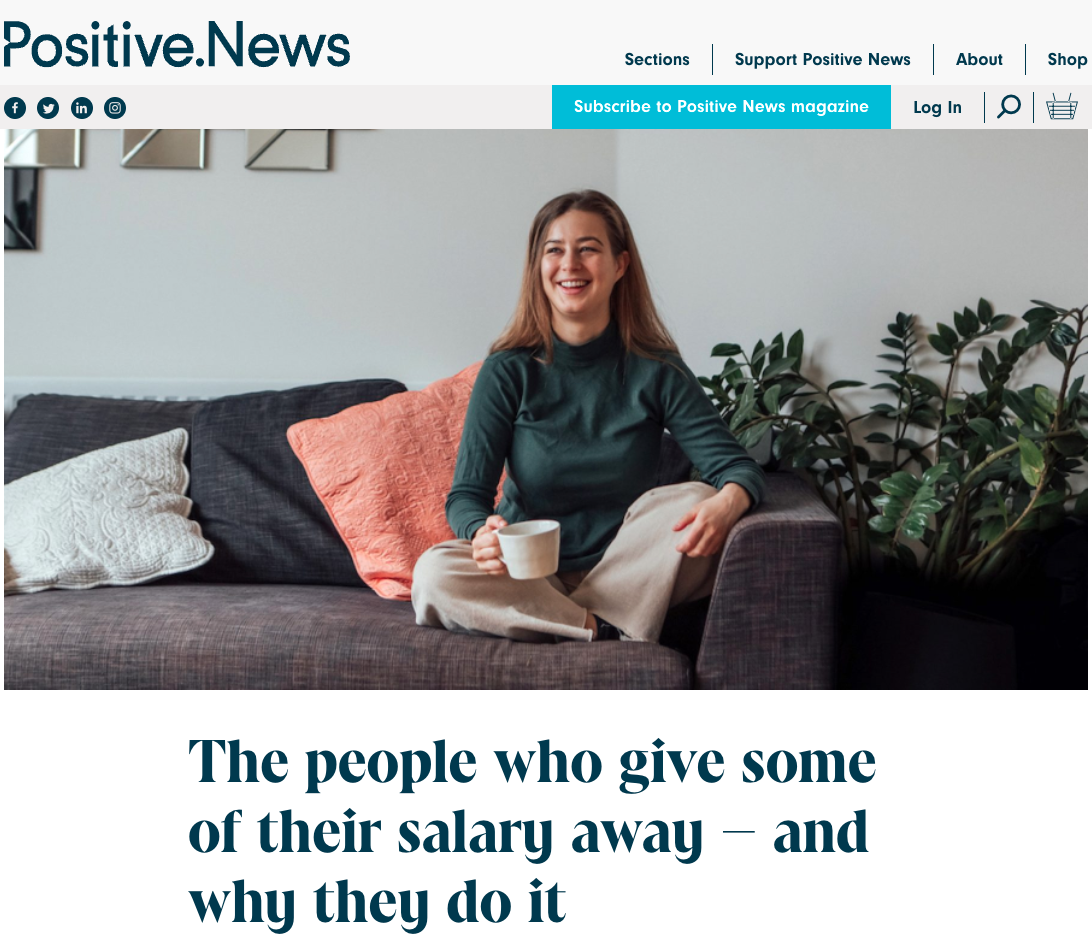Hello and welcome to our May Newsletter!
This month we're experimenting with a video summary of our newsletter. Watch it and tell us whether you think we should continue with this format in the future via a 30 second survey! You can find a version with the video text on our blog.
Until next time, keep doing good!
-Luke Freeman & the rest of the Giving What We Can team.

Attend An Event
Meetups
Come meet the Giving What We Can staff as well as other community members in our meet up this month! This is a great opportunity to ask the staff to show you their pets, about working at Giving What We Can or anything else on your mind.
June Meetup (Americas/Oceania)
Jun 4: 22:00 UTC (New York: Sat 6:00 pm, Sydney: Sun 8:00 am)
June Meetup (Europe/Asia)
Jun 5: 09:30 UTC (London: Sun 10:30 am, Mumbai: Sun 3:00 pm, Singapore: Sun 5:30 pm)
Open Forum
Our open forum is an event where you can come along with questions about effective giving or just come along to meet others interested in effective giving. Alternates between different timezones each month.
June Open Forum (Americas/Oceania)
Jun 16: 23:00 UTC (Sydney 9:00 am, New York 7:00 pm, San Francisco 4:00 pm)
News & Updates
Effective altruism community
Giving What We Can has formally taken over the EA Funds donation platform, so if you are looking to make donations to effective charities in the US, UK or Netherlands you can now visit donate.givingwhatwecan.org. Read more about the changes in our announcement here.
We are currently seeking expressions of interest for a senior researcher and welcome any general expressions of interest.
We shared GWWC member Sonia Albrecht's member story
Will MacAskill on balancing frugality with ambition, whether you need longtermism, and mental health under pressure - Will MacAskill and Rob Wiblin, 80,000 Hours Podcast
Most students who would agree with EA ideas haven't heard of EA yet (results of a large-scale survey) - Lucius Caviola, Erin Morrissey, Joshua Lewis, EA Forum
Effective altruism and the current funding situation - Will MacAskill, 80,000 Hours blog
Evaluators, grantmakers and incubators
Announcing: CE Career Coaching for Impact-focused Entrepreneurs - Karolina Sarek, Charity Entrepreneurship
GiveWell has published the following pages on grants it made or recommended:
About $9 million to Nutrition International to support vitamin A supplementation (VAS) campaigns in Chad.
Two grants to Against Malaria Foundation (AMF): $52.8 million to support long-lasting insecticide-treated net (LLIN) distribution in three countries, and $8.2 million for LLIN distribution in three Nigerian states primarily supported by President's Malaria Initiative (PMI) funding.
Two grants to Malaria Consortium: $79.9 million to maintain or expand seasonal malaria chemoprevention (SMC) programs in four countries, and $15.9 million to implement SMC in Nampula province, Mozambique.
$8.2 million to Fortify Health, which supplies mills in three Indian states with equipment and materials to fortify wheat flour with iron, folic acid, and vitamin B12.
GiveWell published short notes on why it decided to deprioritize deworming pregnant people, unconditional cash transfers during pregnancy, corticosteroids to improve birth outcomes in at-risk pregnant women, and targeted azithromycin distribution to children discharged from hospitals.
GiveWell is also still looking for candidates for its open Senior Program Associate, Senior Researcher, Senior Research Associate, and Content Editor positions.
Cause areas
Animal welfare
From marshes to meat: Reflections from a career in conservation - Sheila Voss, Good Food Institute.
Why should I care about insects? - Jamie Gittens, EA Forum.
Studies show that chickens are smarter than you think - Owen Walsh, The Humane League.
New study on whether animal welfare reforms affect wider attitudes towards animals - Jamie Harris, EA Forum
The horrific bird flu that has wiped out 36 million chickens and turkeys, explained - Kenny Torrella, Vox
Global health and development
Why we didn't launch in Ukraine - Dan Quinn, GiveDirectly.
You can save someone's life. Here's how. (video below)- Giving What We Can.
The problem of global energy inequity, explained by American refrigerators - Siobhan McDonough, Vox.
Have we been thinking about economic growth all wrong? - Dylan Matthews, Vox.
800,000th donation received, US$460,000,000 raised and 400 million people able to be protected - Thank you for your support! - Against Malaria Foundation
James Tibenderana on the state of the art in malaria control and elimination - 80,000 Hours
Laying foundations of good health in school classrooms across India - Nivedita Parashar, Evidence Action
Long-term future
Many think climate change is the world's top problem because it threatens humanity's survival. Is this right? - Benjamin Hilton, 80,000 Hours.
My thoughts on nanotechnology strategy research as an EA cause area - Ben Snodin, Rethink Priorities.
Messy personal stuff that affected my cause prioritization (or: how I started to care about AI safety) - Julia Wise, EA Forum.
EA is more than longtermism - Frances Lorenz, EA Forum.
Should we buy coal mines? - John Halstead, EA Forum
How to give future humans a voice in government - Sigal Samuel, Vox
EU pioneers carbon removals certification: Key recommendations and principles - Clean Air Task Force
___________________________________________________
You can now support Giving What We Can's operations using our donation platform
This funding helps us to inspire donations to high impact charities
___________________________________________________
Useful Links
Review our giving recommendations.
Report your donations with your pledge dashboard.
Share our ideas to help grow our community and multiply your impact.
Join other members in the Giving What We Can Community Facebook group.
Find more ways to get involved with Giving What We Can and effective altruism.
Discuss effective giving and effective altruism on the EA Forum.
You can follow us on Twitter, Facebook, LinkedIn, Instagram, YouTube, or TikTok and subscribe to the EA Newsletter for more news and articles.
Do you have questions about the pledge, Giving What We Can, or effective altruism in general? Check out our FAQ page, or contact us directly.
